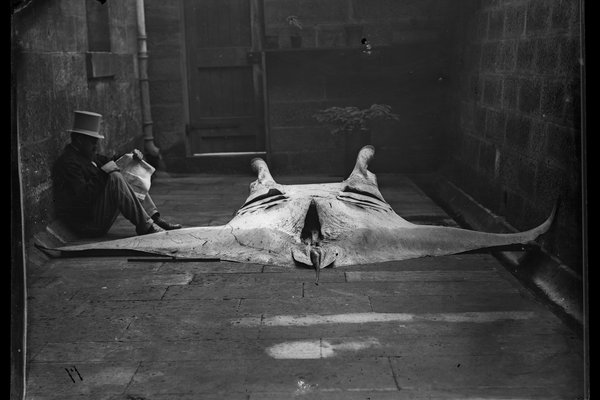1900s: King of the Beasts – Sculpture Taxidermy at the Australian Museum
When entering the recently refurbished Australian Museum in 1910, even the seasoned visitor might have stopped in their tracks.
Directed at them, from a large glass display cabinet right near the entrance, were the intense and slightly threatening stares of four African lions – large, alert and almost alive.

© Australian Museum
Used to row after row of cramped and dimly lit display cabinets crowded with stuffed and lifeless specimens, this new bit of dramatic realism might have come as quite a shock. It represented a new era in museum display techniques which aimed at engaging the onlooker through the ‘reproduction of nature’.
In May 1909 Ward’s Natural Science Establishment of New York, a global supplier of taxidermy specimens, had written to the Australian Museum alerting them to the imminent arrival of their ‘Lion Group’ order and also included a quote for the mounting of several other exotic mammal skins. In August an excited Museum Trust noted that ‘The whole received in good order – the skins most excellent’ and at the same time they okayed a new order of mounts.
In the public exhibition spaces of many natural history museums worldwide, science was beginning to give way to art and taxonomists to taxidermists. The ‘Lion Group’ was the first example of so-called ‘sculpture taxidermy’ to be displayed in the Australian Museum. A burgeoning art form where flat-packed skins were manipulated to make truly life-like statues of animals.
In the field the wet parts of specimens – the brain, heart, guts, mouth parts, eyes and flesh would be removed and the skin dried out thoroughly. Back in the taxidermy studio an artificial body was made of wood-wool by wrapping the material around a steel armature. Anatomical details and musculature were added in and a layer of clay or papier mache applied. Over the wet and mouldable surface the prepared skin was stretched and fine details were further modelled by pushing and squeezing the clay under the skin.
With striking poses, wrinkles and emotive expressions, onlookers of the Lion Group could be fleetingly convinced they were observing a moment in nature. Alert, if slightly alarmed, they could be educated by the scientific accuracy of the specimens and hopefully impressed by their aesthetic appeal.
In the 1920s the dramatic effect of the group was further enhanced by the addition of ‘a scenic background of forest, plain, and hill, with… small herds of zebras, antelopes, and giraffes.’ Today these striking beasts still keep company with a zebra and giraffe as they stalk the Museum’s Wild Planet Gallery just metres from their original vantage point.











